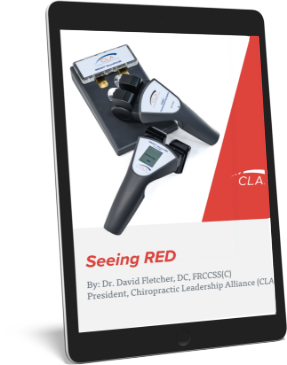By Dr. Christopher Kent, Esq.
Implications of three new papers
A growing body of literature is developing which may have significance to the chiropractor. It is evident that the neurobiological mechanisms in vertebral subluxation may be far more complex than simple alterations in synaptic transmission. Three recent papers deserve your attention.
Sensorimotor integration
HaavikTaylor and Murphy [1] studied the immediate sensorimotor effects of high velocity, low amplitude techniques applied to the cervical spine. The paper noted that the “vertebral lesion” may be called a “vertebral subluxation” by chiropractors. Twelve subjects with a history of recurring neck stiffness and/or neck pain, but no acute symptoms at the time of the study, participated. Somatosensory evoked potentials were measured at spinal, brainstem, and cortical levels. There was a significant decrease in the amplitude of the cortical components following a single session of “manipulation” compared to baseline readings.
In reviewing the literature, the authors noted that spinal manipulation can lead to alterations in reflex excitability, altered sensory processing, and altered motor processing. The authors wrote:
- There is a growing body of evidence suggesting that the presence of spinal dysfunction of various kinds has an effect on central neural processing. For example, several authors have suggested spinal dysfunction may lead to altered afferent input to the CNS. Altering afferent input to the CNS is well known to lead to plastic changes in the way that it responds to any subsequent input.
- Altered afferent input from joints can lead to both inhibition and facilitation of neural input to related muscles.
- Even painless experimentally induced joint dysfunction has been shown to inhibit surrounding muscles.
- Numerous studies have shown rapid central plastic changes after injuries and altered sensory input from the body.
- Given that spinal dysfunction would alter the balance of afferent input to the CNS we propose that this altered afferent input may over time lead to potential maladaptive neural plastic changes in the CNS.
- If spinal manipulation reduces excessive signaling from the involved intervertebral muscles this altered afferent input to the CNS may change the way it responds to any subsequent input, such as the electrical study.
In other words, vertebral subluxations may, by altering the input to the CNS, change how the nervous system responds to the environment any subsequent input. The implications of maladaptive neuroplastic changes could have profound clinical significance.
Nonsynaptic messaging
Charles Blum’s paper [2] in the Journal of Vertebral Subluxation Research (JVSR) on nonsynaptic messaging is a quick and easy introduction to this important subject. Blum discusses various classes of nonsynaptic interaction, including chemical and electronic coupling through gap junctions, ephaptic transmissions, field effect interactions, and fluctuations in extracellular ions. The paper also reviews glial cell messaging, and how neural rhythmic pulsations propagated through the CSF may be a type of nonsynaptic messaging.
Of great interest is the discussion of piezoelectricity. Mechanical energy applied to crystalline structures results in electrical responses. Since connective tissue is crystalline in nature, biomechanical changes, such as those associated with subluxation, may elicit electrical responses in bone and other connective tissues. Such electrical changes may affect, “control of cell nutrition, local pH control and enzyme activation or suppression, orientation of intracellular macromolecules, migratory and proliferative activity of cells, synthetic capability and specialized function of cells, contractility and permeability of cell membranes and energy transfer.”
This paper is an excellent primer for those who seek a painless, clinically relevant discussion of nonsynaptic messaging. I highly recommend it.
Thinking in the spinal cord?
Investigators at the University of Copenhagen “have demonstrated that the spinal cord uses network mechanisms similar to those used in the brain…Until now, the general belief was that the spinal networks functioned mechanic; and completely without random impulses. The new discovery enables researchers to use the theory on cortical networks to explore how spinal cords generate movements…How humans are able to move at all remains a puzzle. Our muscles are controlled by thousands of nerve cells in the spinal cord. Entire, complex system must work as a whole in order to successfully create a single motion. The new research shows that even if we repeat a certain motion with high accuracy, the involved nerve cells never repeat their activity patterns. This particular observation reflects the organization of the nerve cells of the cerebral cortex.” [3]
The study, published in Science [4], concluded, “Our study suggests that balanced states of inhibitory and excitatory synaptic activity did not evolve with higher brain function, but were already present with functional motor networks in the spinal cord.”
Thus, the spinal cord is far more than a mere conduit for signal propagation between the brain and the body. It may actually “think,” employing mechanisms previously thought to operate only in the brain.
References
1. HaavikTaylor H, Murphy B: “Cervical spine manipulation alters sensorimotor integration: A somatosensory evoked potential study.” Clinical Neurophysiology 118 (2007) 391402 .
2. Blum CL: “Nonsynaptic messaging: piezoelecticity, bioelectric fields, neuromelanin and dentocranial implications.” J. Vertebral Subluxation Res. JVSR.com, Jan 30, 2007.
3. Thinking with the spinal cord? Kobenhavns Umversitet www.ku.dk/english/news/spinal.htm
4. Berg RW, Alaburda A, Hounsgaard J: “Balanced inhibition and excitation drive spike activity in spinal halfcenters.” Science 2007;315: 390393.




























































